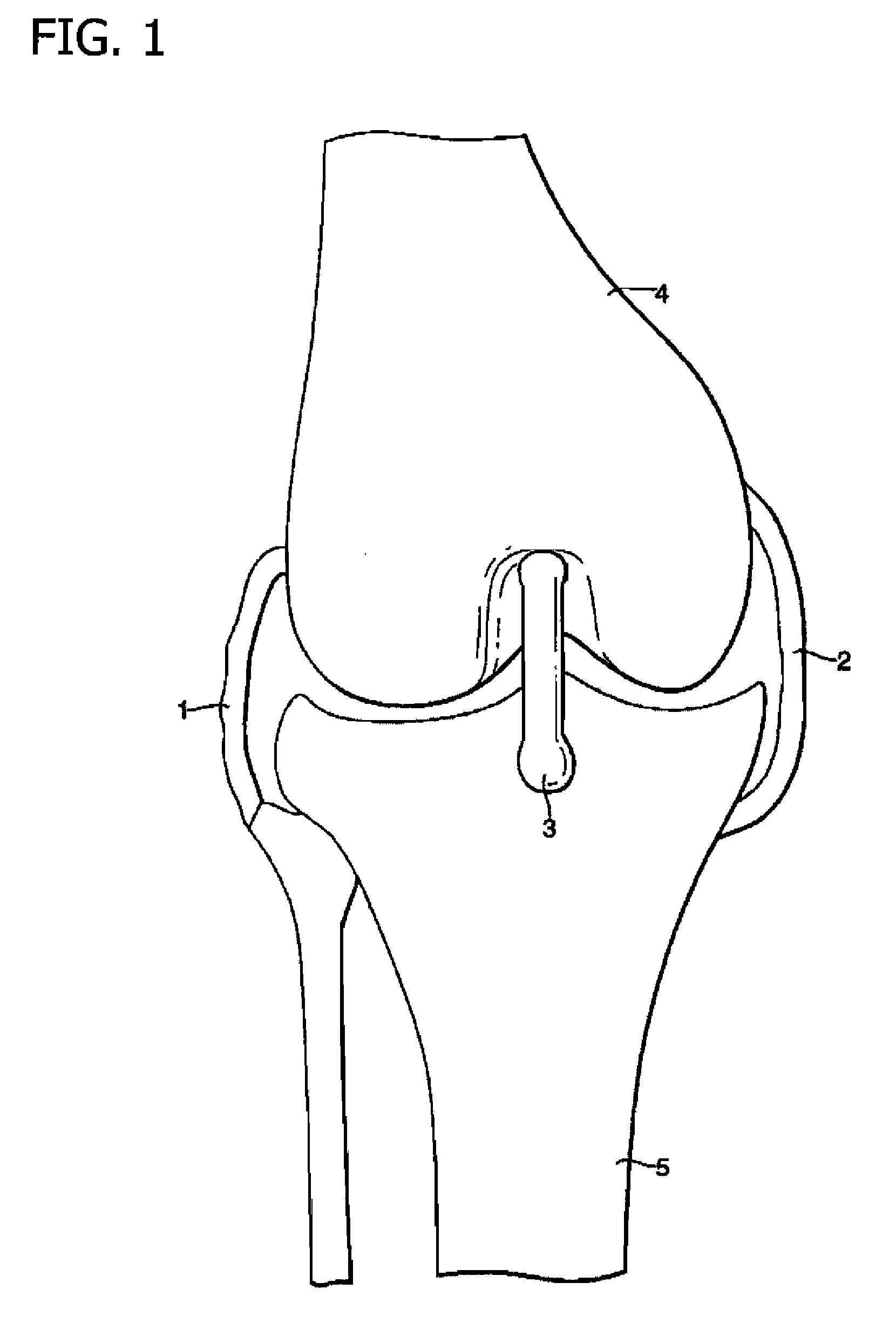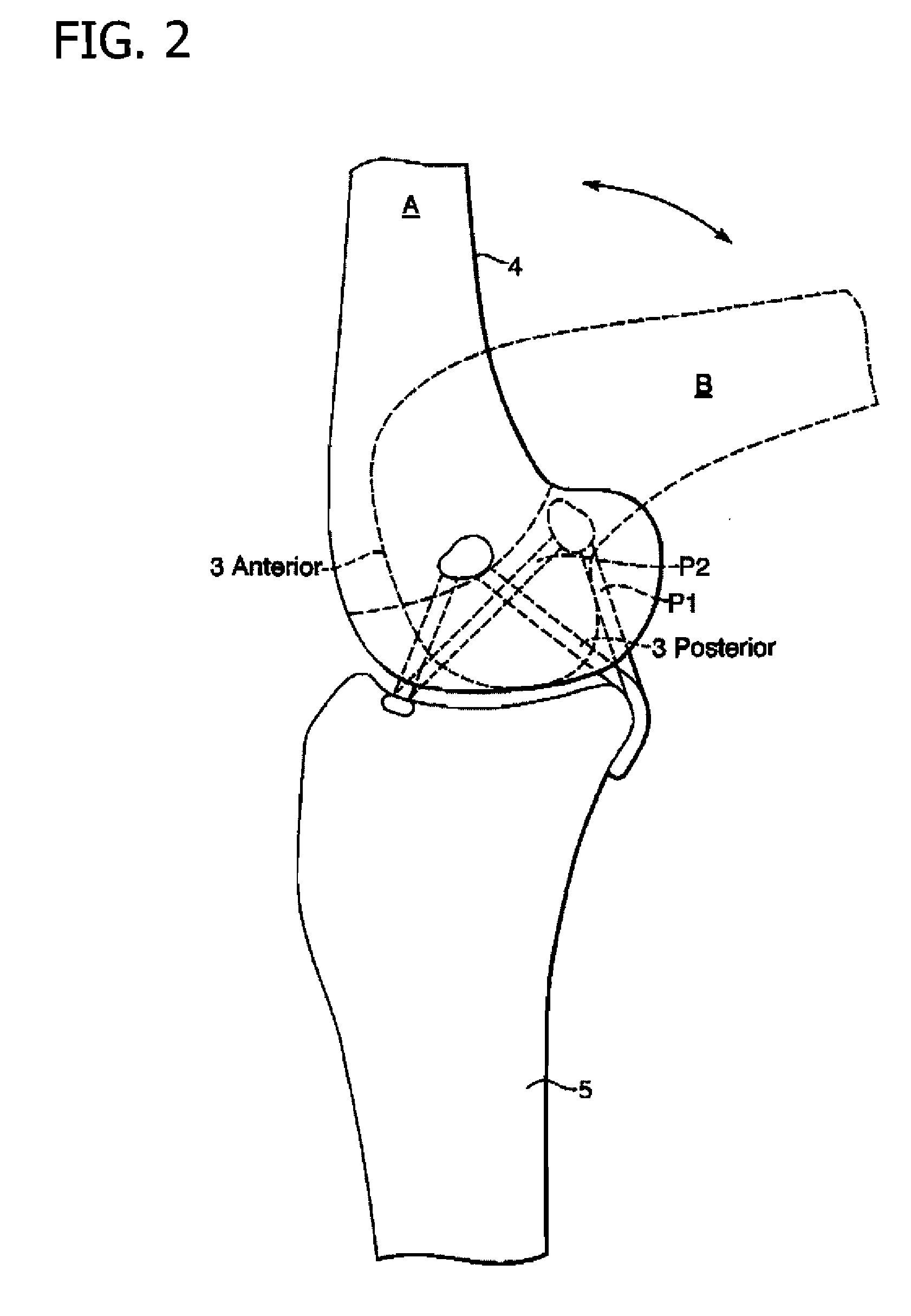Prostheses
a technology of cruciate ligaments and prostheses, applied in the field of prostheses, can solve the problems of significant patella-femoral, injury, and other knee function problems, and achieve the effect of improving functioning
- Summary
- Abstract
- Description
- Claims
- Application Information
AI Technical Summary
Benefits of technology
Problems solved by technology
Method used
Image
Examples
Embodiment Construction
[0087] The present invention will now be described with reference to a knee prosthesis. However, it will be understood that it may be utilised with a normal knee.
[0088] As illustrated in FIG. 6 a jig 11 comprises rods 9 connected to a guide 10. These are angled such they represent the arms of a segment of a circle. The arms are in the same plane and are of the same length. Fingers 12 extend from the end of the arms.
[0089] The jig 11 is then placed against the exposed knee which is positioned in flexion as illustrated in FIGS. 7 and 8. The fingers 12 are located against the face of the condyles with an upper finger being placed at the end of the femur 3. The aperture 10 lies on the epicondylar axis. As illustrated in FIG. 8, the aperture may be a drill guide.
[0090] Once the drill guide 12 is correctly positioned, it may be stabilised using pins or may be clamped on either side of the inter-condylar notch or the femur. The femoral bore will then be made and the jig removed.
[0091] ...
PUM
 Login to View More
Login to View More Abstract
Description
Claims
Application Information
 Login to View More
Login to View More - R&D
- Intellectual Property
- Life Sciences
- Materials
- Tech Scout
- Unparalleled Data Quality
- Higher Quality Content
- 60% Fewer Hallucinations
Browse by: Latest US Patents, China's latest patents, Technical Efficacy Thesaurus, Application Domain, Technology Topic, Popular Technical Reports.
© 2025 PatSnap. All rights reserved.Legal|Privacy policy|Modern Slavery Act Transparency Statement|Sitemap|About US| Contact US: help@patsnap.com



